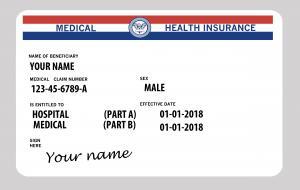According to AARP, couples age 65 who retired in 2017 were estimated to pay $275,000 for health care over the course of their retirement. This is a 6% increase over 2016’s projections, and over a 70% increase since annual research began in 2002. The majority of retirees will enroll in Medicare to help cover medical costs during retirement. However, there are several things you need to know about how Medicare works, and how to enroll in order to avoid penalties.
Medicare: An Overview
Medicare is comprised of four individual parts: A, B, C (or Medical Advantage), and D. Each piece covers a specific kind of medical expense for qualifying enrollees. Medicare Part A and B are what we know as Traditional Medicare. Medicare Part C and D are supplementary.
Medicare Part A: Hospital Coverage
Medicare Part A is viewed as hospital insurance coverage and includes coverage for hospital care, skilled nursing facilities, nursing home care, hospice, and home health care services. Individuals may qualify for Medicare Part A with no monthly premium if:
- They already are receiving Social Security benefits as a retiree or Railroad Retirement Board benefits
- You’re eligible for either Social Security or Railroad Retirement benefits, but aren’t enrolled yet
- You or your spouse has Medicare-covered employment
Medicare Part B: Medically Necessary Services
Medicare Part B covers both medically necessary services as well as preventative care. This includes:
- Clinical research
- Ambulance services
- Durable medical equipment (DME)
- Mental health
- Inpatient care
- Outpatient care
- Partial hospitalization
- Getting a second opinion before surgery
- Limited outpatient prescription drugs
Medicare Part B premiums are established by law and generally change each year, and can be increased from the base rate for higher levels of income.
Medicare Part C: Medicare Advantage
Medicare Advantage plans, or Medicare Part C, is offered through private health insurance companies that have been pre-approved by Medicare. Medicare Part C often covers all coverage from Medicare Part A and B, and has additional coverage options – such as vision and dental. Coverage and costs vary by provider.
Medicare Part D: Prescription Drug Coverage
Many prescription drugs aren’t covered by Medicare Part A or B, and Part D plans look to bridge the gap in coverage for Medicare enrollees. Medicare Part D, like Medicare Advantage plans, are offered by private insurance companies. Costs and coverage vary by provider, and it’s important to check that your prescriptions are covered both when you enroll and annually, as coverage often changes.
How to Enroll
The majority of Americans are eligible to enroll in Medicare at age 65. Note: If you are disabled and receiving Social Security disability checks, this doesn’t apply to you.
The traditional enrollment period for Medicare Part A and B is 7 months long and begins three months before your 65th birthday. It includes:
- 3 months prior to your 65th birthday month
- Your birthday month
- 3 months after your 65th birthday month
If you are already collecting Social Security benefits, you are automatically prompted to enroll in Medicare, and you may be automatically enrolled.
If you aren’t automatically enrolled in Medicare, you will need to be aware of the specific enrollment periods for each Part. You can sign up for Part A and/or Part B Medicare during the General Enrollment Period before January 1-March 31 every year if:
- You didn’t sign up in your initial 7-month enrollment eligibility period
- You aren’t eligible for a Special Enrollment Period
What is a Special Enrollment Period?
If you fail to sign up for Medicare Part A and/or Part B during your enrollment period, you may qualify for a Special Enrollment Period (SEP). If you are currently covered under a group health plan with your employer, you have a SEP to sign up for Medicare Part A and/or B anytime as long as:
- You and/or your spouse is working
- You’re currently covered by a group health plan through yoru employer
Choosing to delay enrollment in Part B coverage because it comes with a monthly premium and you already have existing coverage through your or your spouse’s workplace plan will qualify you for a Special Enrollment Period.
Additionally, you have an 8-month SEP to sign up for Part A and/or Part B during the following times:
- The month after your employment ends
- The month after your group health plan insurance based on current employment ends
Note: Delaying enrollment until the month you turn 65 (or in the 3 months after your 65th birthday month) will result in your Part B coverage being delayed.
Penalties
If you’re not automatically enrolled in Medicare Part A and/or Part B, you don’t sign up during your initial enrollment period, and you don’t qualify for a SEP, you could face penalties.
Although many individuals are eligible for premium-free Medicare Part A coverage, some are not. If you are not eligible for premium-free Medicare Part A, and you don’t sign up during your initial enrollment period, you will be subject to a late-enrollment penalty that is 10% of your monthly premium. The premium is calculated based on the number of years you delayed signing up.
If you are not automatically enrolled in Medicare Part B, and you do not enroll during your initial enrollment period, you could be subject to a 10% penalty for every 12-month period you were eligible to enroll but did not.
Author: Callahan Financial Planning
Callahan Financial Planning is an independent fiduciary financial advisory firm, providing planning on a fee-only basis, without sales commissions, with offices in San Rafael, San Francisco, and Mill Valley in Northern California, in Omaha and Lincoln in Nebraska, and in the Denver metro area in Centennial Colorado.

